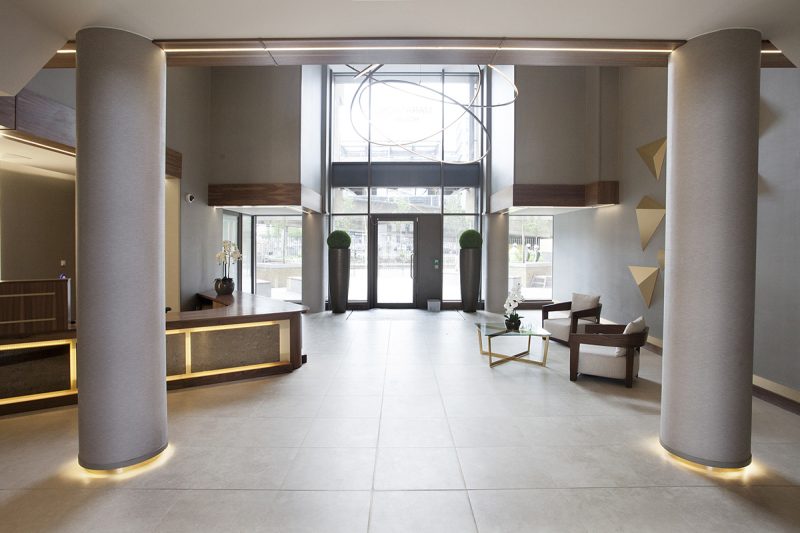Having a space that packs a punch is the most obvious reason for getting your design right. Whatever your space, you’ll no doubt want to make the best first impression and reflect the excellence of your brand with your office, shop, lobby or marketing suite. This effect is more than skin deep, though, and interior design can influence the psychology and subconscious of your clients and employees in many ways.
Colour affects mood
The colours you choose for your space have a massive impact on the way you’re perceived by your clients and the way you and your employees work. Orange is a great colour to inspire creativity, innovation and boost energy, but it can leave people feeling overwhelmed. Meanwhile, yellow provides these benefits, whilst having the advantage of working well with natural light to brighten environments. Blues and greens are go-tos for entryways, providing a calm and peaceful transition from the outside in. Choose your colours wisely, depending on what you need to inspire in your space.
Perception of space
This is another time-honoured concept used by architects and interior designers alike to make rooms look more spacious and user-friendly. Visual tricks, such as brightening your colour scheme, keeping the space clutter free and creating a sense of light, all work to make spaces look bigger and more welcoming; something that is essential when creating client friendly environments, as well as spaces that promote employee wellbeing.
Natural elements reduce anxiety
It’s a proven fact that natural prints are the most calming in busy workplaces. So, incorporating elements of the outside into your interior design is a great way to create a calming space for employees and clients alike, again promoting wellbeing and a great client-experience.
Think shapes
Architects and designers see in forms and shapes, and for good reason. The shapes and patterns you incorporate in your space might give it a modern aesthetic, but could be damaging when it comes to subconscious perceptions of your brand. Lots of sharp angles are great for increasing energy, but are also culprits when it comes to building tension and stress. In addition, avoid confusing patterns and visual clutter around entryways; these can actually put people off from entering, so your design is detrimental before they’ve even crossed the threshold.
Psychology is an important consideration when you come to make design decisions. You want people to feel at ease and in control when they enter your space. If you’d like some advice on making your space a psychological haven, don’t hesitate to get in touch with the expert Spot This Space team.


